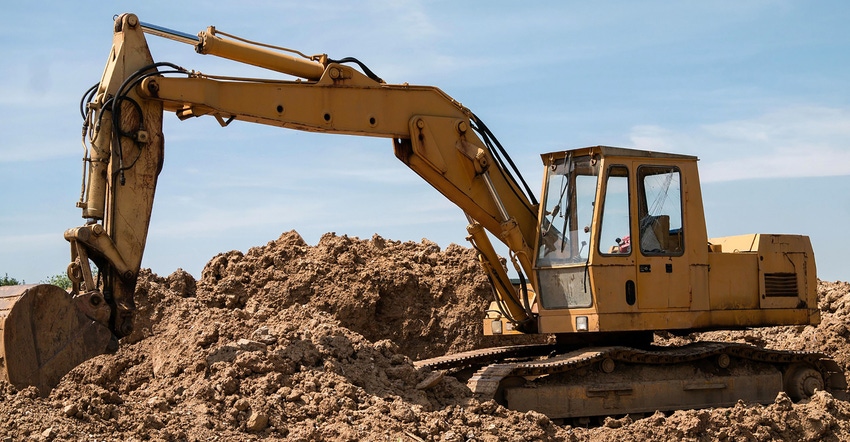July 9, 2019

By Austin Duerfeldt
For farmers and ranchers with flood-damaged fields and pastures, the need for specialized equipment to move and level ground is at the top of everyone's list.
Some look to hire conservation companies to bring in bulldozers, loaders, excavators and trucks to get the job done. This bundle of equipment plus operator probably will cost $120 to $170 per hour depending on experience and size and age of equipment.
The next thought may be to rent a piece of equipment, if you have the time and experience and the job is straightforward. Usually, rentals run price points for daily, weekly or monthly rent, and run plus or minus $1,000, $3,000 and $7,000, respectively, for good-sized equipment.
The third option that many consider is buying. While talking to your two neighbors that currently have the same equipment need as you, it is proposed to go in together on a bulldozer. For a late 1990s bulldozer with an undercarriage at about 50%, you're looking at about $40,000. Split that three ways, and it’s about $13,000 a person. Joint ownership into equipment can be a great way to lower machinery cost per acre.
If joint ownership is a route you are interested in, discuss and write out the ground rules in which the equipment is shared. Excellent communication on the front end will save you from arguments on the back end. Here are some points and things to consider.
Going over ground rules
One of the most significant sticking points with shared ownership of equipment is scheduled usage. Many farm processes have a narrow window of opportunity to till, plant and harvest. Look at this spring and planting season as a prime example. The rains made it so planting opportunities were at a premium.
If you and a neighbor both have 800 acres to plant and jointly own a planter, who gets to use it first? Does there need to be a rotation, or maybe first use receives a higher share of repair and maintenance?
Another talking point is cleaning the equipment between farms. Working to actively prevent spreading weeds and insects from one operation to another should be a point of discussion. Along the lines of cleaning the equipment, what about proper care and use?
Going back to the original conversation of buying a bulldozer, there is a difference in clearing an old farm site with a bunch of concrete versus pushing dirt across a bottom. Does there need to be a limitation of use or a premium paid for damages incurred while using the equipment "hard"?
What about custom hire usage? If one of the three neighbors in on the bulldozer wants to do some more work for others, does the person need to pay a rental rate to the other two owners?
Another point of interest is to discuss the process to get out of the agreement. If one of the three owners of the bulldozer wants to sell their third, how does that work? Do the other two buy his third interest, and if so, how is the price set?
These are just a few of the items to consider talking about. Tracking costs and using appropriate cost allocation methods at the end of the year will be necessary. The type of equipment bought will help direct the conversation on potential points of interest that should be discussed.
Closing the deal
When jointly owning equipment, there are a few other legal things to remember. In terms of income tax treatment, you will be allocated your portion of the machinery to depreciate. In our bulldozer example, we have one-third ownership of a $40,000 bulldozer leaving us with about $13,000 eligible for us to take in depreciation. As mentioned, a cost allocation breakdown will be needed to claim our share of expenses such as repair and maintenance.
Using machinery in a joint ownership arrangement can be an issue for loans if you wish to use it as collateral. Please talk with your lenders to discuss how joint ownership equipment will be treated.
Finally, speak with your insurance agent on how the equipment will be covered. Having different owners and issues such as commercial work have the potential to change recommended insurance coverages.
Joint ownership can be an excellent way to add machinery to an operation in a cost-effective manner. Having a written agreement on the ground rules of usage will help alleviate arguments in the future. Reviewing that agreement on an annual basis allows it to stay relevant and address new and unforeseen issues that might arise.
Duerfeldt is a Nebraska Extension agricultural economist.
You May Also Like




